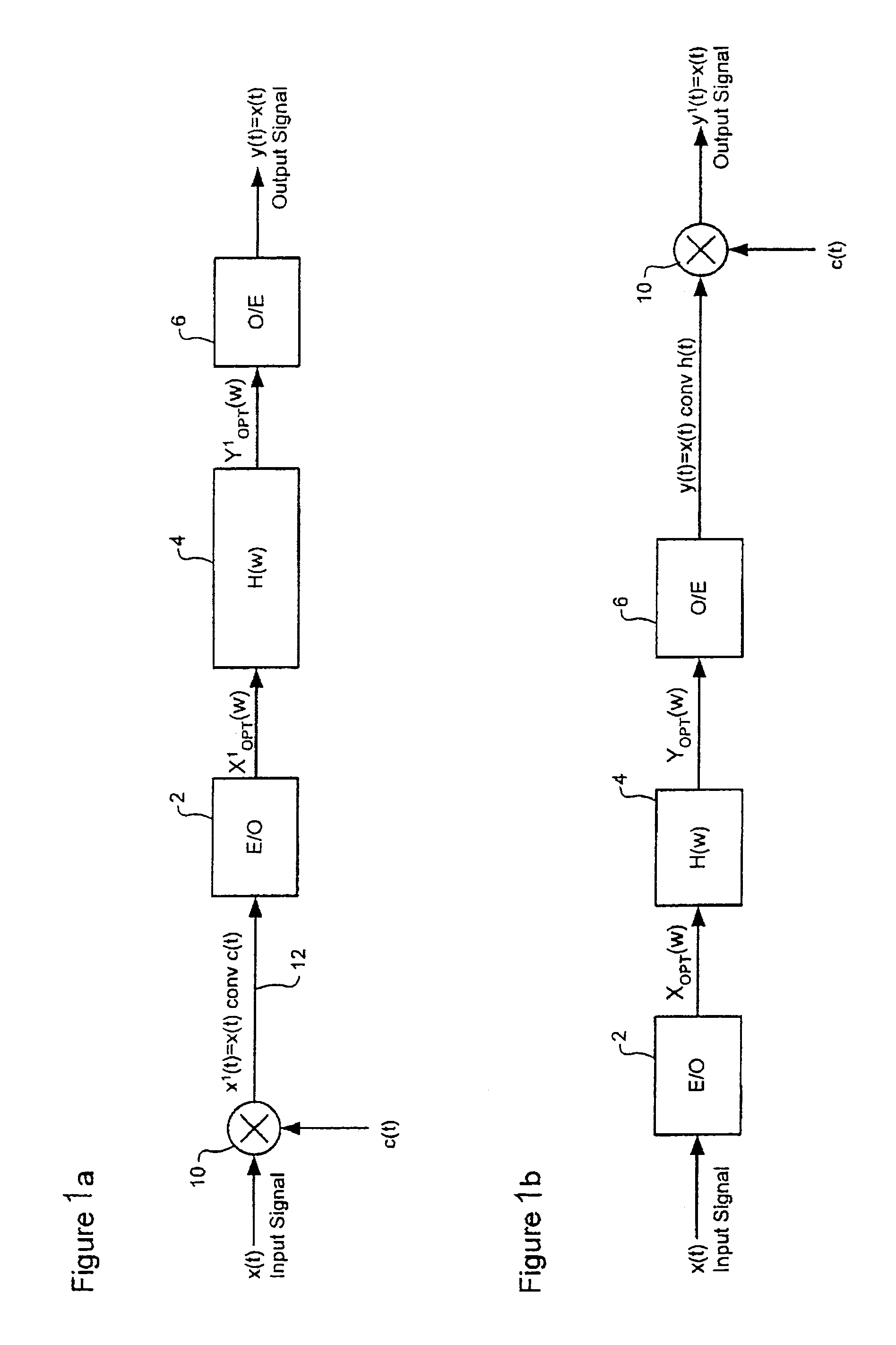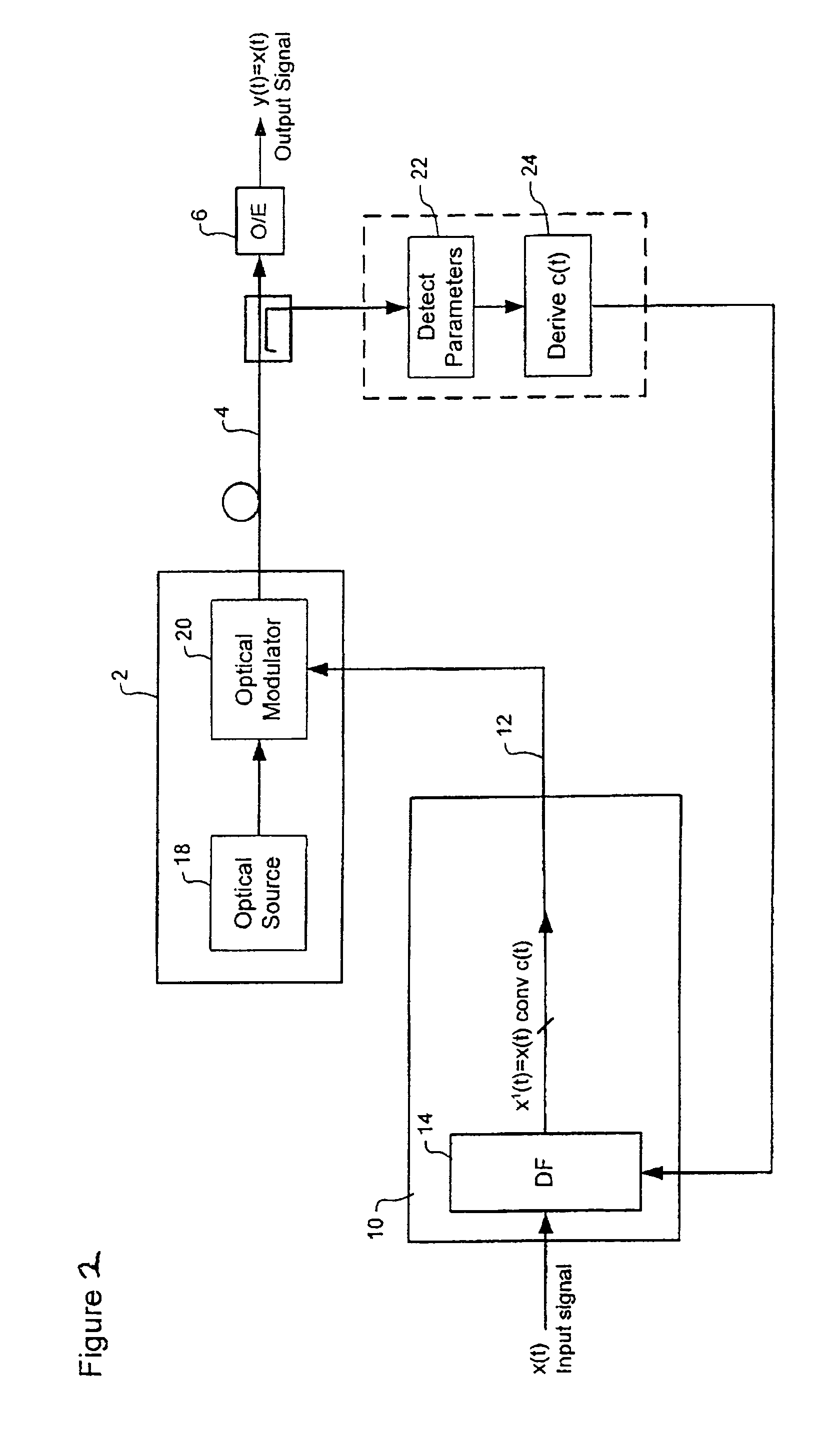Optical laser control for optical communications systems
- Summary
- Abstract
- Description
- Claims
- Application Information
AI Technical Summary
Benefits of technology
Problems solved by technology
Method used
Image
Examples
Embodiment Construction
[0042]The Assignee has proposed a system which enables the characteristics of an optical signal to be varied by digital processing of the original laser electrical drive current waveform, in the electrical domain, and also enables analysis of optical signal characteristics electrically. This ability to pre-process or post-process an optical signal in the electrical domain has been proposed in order to enable compensation of optical distortions, most notably chromatic dispersion.
[0043]The system is described in US 24067064A, which is hereby incorporated by way of reference material. A description of that system is given below before describing the system of the invention, as the system of the invention can be implemented using many of the concepts embodied in that system.
[0044]The optical link between network nodes in a long reach system is typically made up of multiple concatenated optical components, including one or more (and possibly 20 or more) optical fiber spans (e.g., of 40-1...
PUM
 Login to View More
Login to View More Abstract
Description
Claims
Application Information
 Login to View More
Login to View More - R&D
- Intellectual Property
- Life Sciences
- Materials
- Tech Scout
- Unparalleled Data Quality
- Higher Quality Content
- 60% Fewer Hallucinations
Browse by: Latest US Patents, China's latest patents, Technical Efficacy Thesaurus, Application Domain, Technology Topic, Popular Technical Reports.
© 2025 PatSnap. All rights reserved.Legal|Privacy policy|Modern Slavery Act Transparency Statement|Sitemap|About US| Contact US: help@patsnap.com



